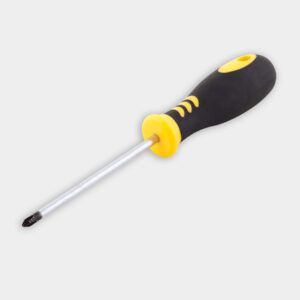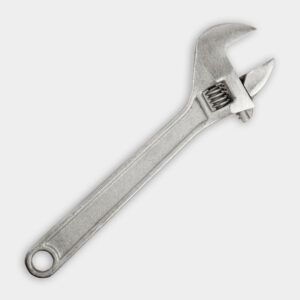We may be compensated if you purchase through links on our website. Our team is committed to delivering honest, objective, and independent reviews on home products and services.
Steam radiators have served as reliable heating sources in homes for decades. But, like any mechanical system, they need regular maintenance to keep working well. This article guides you through the essential tasks of maintaining your steam radiator. Plus, This Old House plumbing and heating expert Richard Trethewey shares how he addresses common issues like noisy operation and leaky valves in the video above.
Understanding Steam Radiators
Steam radiators heat your home by circulating steam from a boiler through a series of pipes into the radiator, which then releases heat into the room. While they’re generally reliable, steam radiators can develop problems over time. Regular maintenance helps prevent issues before they turn into costly repairs.
Common Issues With Steam Radiators
Some common issues you might experience include:
- Noisy operation (hissing, banging, or whistling sounds)
- Uneven heating
- Leaky valves
- Stuck air vents
- Corroded or damaged pipes
Essential Maintenance Tasks for Steam Radiators
By following a few key steps, you can keep your steam radiator in great shape.
Inspecting the Air Vent
The air vent is one of the most important components in a steam radiator. This part allows air to escape as steam enters the radiator. Over time, air vents can get clogged or damaged, as shown in the video.
Inspect the current vent for any blockages or inefficiencies. Sometimes, cleaning the vent with a soft brush or a small amount of vinegar solution can resolve minor issues without the need for a full replacement.
Replacing the Air Vent
If it can’t be unclogged, here’s how to replace the air vent:
- Close the valve at the base of the radiator.
- Turn off the room’s thermostat.
- Carefully unscrew the old air vent from the side of the radiator. If the valve is hot, use a thick cloth or gloves to protect your hand.
- Wrap Teflon tape around the threads of the new steam valve.
- Thread the new steam valve into the side of the radiator and point it straight up.
Repacking the Valve
Another important maintenance task is repacking the valve at the base of the radiator to prevent steam leaks. Trethewey emphasizes the importance of creating a tight seal.
To repack the valve:
- Remove the handle from the valve at the base of the radiator.
- Use an adjustable wrench to unscrew the packing nut from the valve stem.
- Wrap graphite packing gasket around the threaded valve stem.
- Replace the nut and tighten it with an adjustable wrench.
- Open the valve at the base of the radiator.
- Turn on the room’s thermostat.
Cleaning the Radiator
Regularly cleaning your steam radiator can improve its efficiency and appearance. Here’s how to clean your radiator:
- Turn off the heating system and allow the radiator to cool completely.
- Use a vacuum cleaner with a brush attachment to remove dust and debris from the radiator’s surface and between the fins.
- Wipe down the exterior with a damp cloth and mild soap solution. This helps remove any residual grime or stains.
- For hard-to-reach areas, use a radiator brush or a long, flexible duster.
- Dry the radiator thoroughly to prevent rust.
Looking for Rust and Corrosion
During the cleaning process, inspect your radiator for signs of rust or corrosion. If you spot any, gently sand the affected areas and apply a rust-inhibiting primer followed by radiator paint. This additional step can extend the life of your radiator and maintain its appearance.
Troubleshooting Common Steam Radiator Problems
Even with regular maintenance, steam radiators can sometimes develop issues. Here are some common problems and how to address them.
Noisy Radiators
If your radiator is making strange noises, here’s what could be causing it:
- Hissing: Usually a sign of a faulty air vent. Replacing the vent should fix the issue.
- Banging: This may be due to water hammer, a loud noise which happens when steam hits cooled water in the pipes. Make sure the radiator is slightly tilted towards the inlet pipe to let condensation drain properly.
- Whistling: Often caused by a partially closed valve. Check that the valve is fully open or closed.
Uneven Heating
If your radiator isn’t heating evenly, try bleeding the radiator to remove trapped air. Check that the radiator is level or slightly tilted toward the inlet pipe, and make sure the valve is fully open.
Leaky Valves
Leaky valves can waste energy and damage your floors. If you notice a leak, try to tighten the valve packing nut slightly with an adjustable wrench. If tightening doesn’t work, repack the valve as described earlier. For persistent leaks, you may need to replace the entire valve.
Reduced Heat Output
If your steam radiator is not providing enough heat, even after bleeding and checking for proper water flow, the boiler’s pressure settings could be causing the issue. Adjust the pressure setting according to the manufacturer’s instructions. If you’re unsure, consult an expert to avoid damaging the system.
When To Call a Professional for Your Steam Radiator
While you can do many maintenance tasks yourself, some situations require professional attention. We recommend hiring an HVAC technician if:
- You’re uncomfortable performing maintenance tasks yourself.
- Your radiator continues to malfunction after basic troubleshooting.
- You notice signs of corrosion or damage to the pipes or radiator body.
- Your heating system is more than 15–20 years old and showing signs of inefficiency.
A professional can inspect the entire system, identify hidden problems, and recommend repairs or replacements if necessary.
If your steam radiator is no longer working, it may be time to replace it. Read this guide on how to replace a steam radiator.


